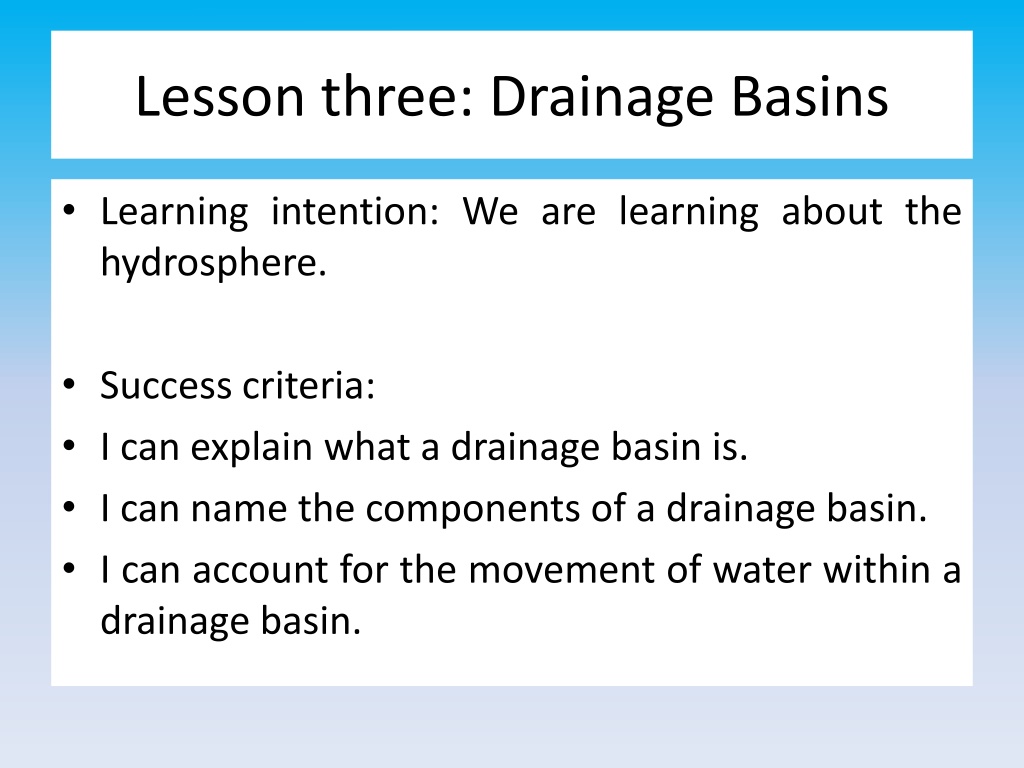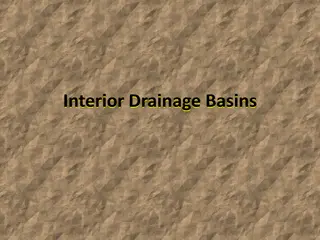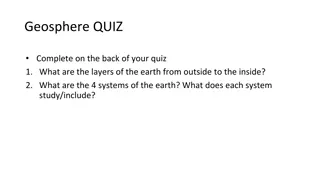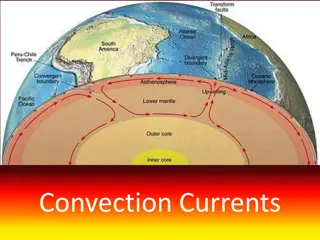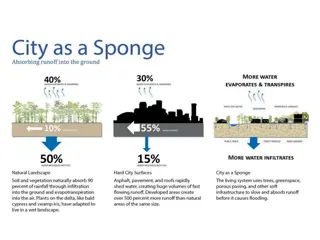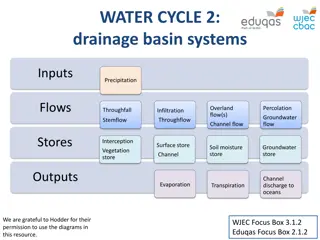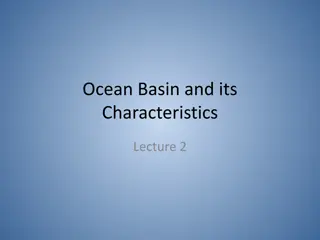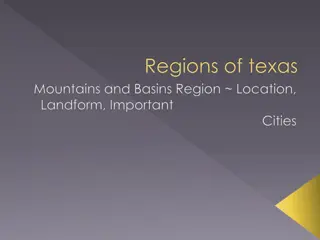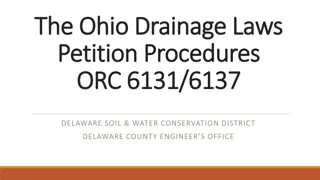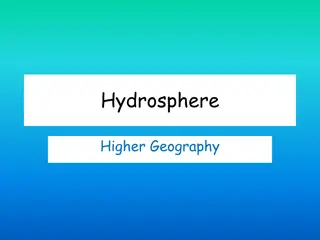Understanding Drainage Basins in the Hydrosphere
Explore the concept of drainage basins in the context of the hydrosphere. Learn about the components, movement of water, and key elements within drainage basins. Understand how water moves through these systems and factors that influence them, such as precipitation and storage capacity.
Download Presentation

Please find below an Image/Link to download the presentation.
The content on the website is provided AS IS for your information and personal use only. It may not be sold, licensed, or shared on other websites without obtaining consent from the author. Download presentation by click this link. If you encounter any issues during the download, it is possible that the publisher has removed the file from their server.
E N D
Presentation Transcript
Lesson three: Drainage Basins Learning intention: We are learning about the hydrosphere. Success criteria: I can explain what a drainage basin is. I can name the components of a drainage basin. I can account for the movement of water within a drainage basin.
What is a drainage basin? The drainage basin is an open system, where water is added and lost and constantly moves. This means it has inputs, outputs, stores and transfers. The drainage basin is an area of land surrounding a river and its tributaries into which all the water drains. It will also include water that is stored in the water table and that flows over the surface as runoff.
What is a drainage basin? All rivers have an imaginary line called a watershed, surrounding the land from which they receive water. When precipitation falls inside the watershed it will find its way into the river. If it falls outside of the watershed it will drain into a different river.
Starter Copy down this table Inputs Outputs Storage Transfers Categorise the elements of a drainage basin into one of the columns in your table. See next slide
Elements of a drainage basin Rivers Overlandflow/runoff Precipitation Transpiration Groundwater Evaporation Lakes Through flow Soil Vegetation Glaciers Infiltration Solar energy Stem flow Percolation Flowing into the sea
How water moves through a drainage basin Are you familiar with all of these terms?
Think What will affect these things? Amount of precipitation How much can be stored
Inputs The main input is precipitation. This can be in the form of rain, hail, sleet or snow. Clouds gather their content from water which has been evaporated from water sources such as the seas and oceans The amount of precipitation is determined by how often it rains, as well as how long it rains for and how strong the rain falls.
Storage (below, above) Water can be stored in the drainage basin on the surface in lakes and rivers. It can also be stored by vegetation when leaves intercept precipitation. Furthermore, water can be stored below the in groundwater. The amount which can be stored in this zone is determined by the permeability of the soil and rock.
Transfers (below, above) Water is then transferred through the drainage basin. This can occur in two ways: surface run off where water flows across the surface and via river channels within the drainage basin. Water is transferred below the ground as it makes it way towards a river. Throughflow and groundwater flow are two examples of this and this movement is generally slow.
Outputs Outputs are where water exits the drainage basin and it can be lost directly through the river when it enters the sea, or it can be lost through evaporation when it turns from a liquid into a gas again. Water can also be lost via the trees and vegetation through transpiration which is when water evaporates from the leaves after being intercepted. This evapotranspiration. combined is called
Task 3 Past Paper Question 10 minutes A drainage basin is an open system with four elements. Account for the movement of water within a drainage basin with reference to the four elements; Inputs, Outputs, Storage and Transfers. (5) N.B. Answers should refer to all four elements start with inputs. Precipitation is the main input in a drainage basin. Rain clouds are fed by evaporation from water sources including the seas/oceans.
Peer Marking Swap your answer with someone at your table Each developed point gains a mark Give a mark if you think the person has written something similar to what is shown in the perfect answer. If you are unsure ask your teacher.
Perfect answer The main input in a drainage basin is precipitation. This can be in the form of rain, hail, sleet or snow. The amount is determined by the intensity, the duration and the type. One way the water is transferred is above the surface. It can transfer across the land which is called overland flow where it flows over the surface of the land. It can also flow through the rivers, known as channel flow. It can also transfer below the ground. The water enters through infiltration and then continues to move through the soil through percolation. It then moves through the soil towards the sea or a river via throughflow.
Perfect answer Water can also be stored in the system above ground through vegetation. Firstly by interception which is when a water droplet lands on a leaf. Secondly, by absorption when the water is stored in the plants and roots. Additionally, when water is stored underground it is called groundwater. This is determined by the amount of pore spaces and the rock type. Water from lakes and seas leaves the system (output) by evaporation when water vapour rises into the atmosphere. It also leaves when tress transpire water from leaves. When both of these are put together it is known as evapotranspiration.
Success criteria I can explain what a drainage basin is. I can name the components of a drainage basin. I can account for the movement of water within a drainage basin.
